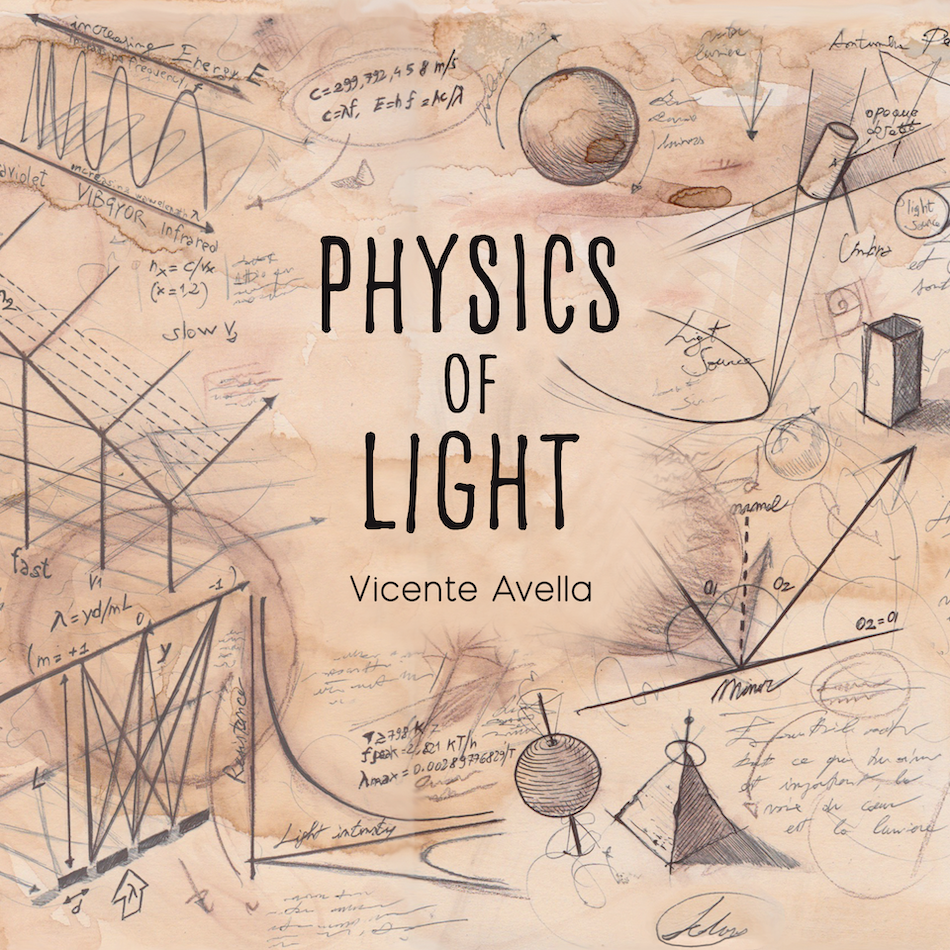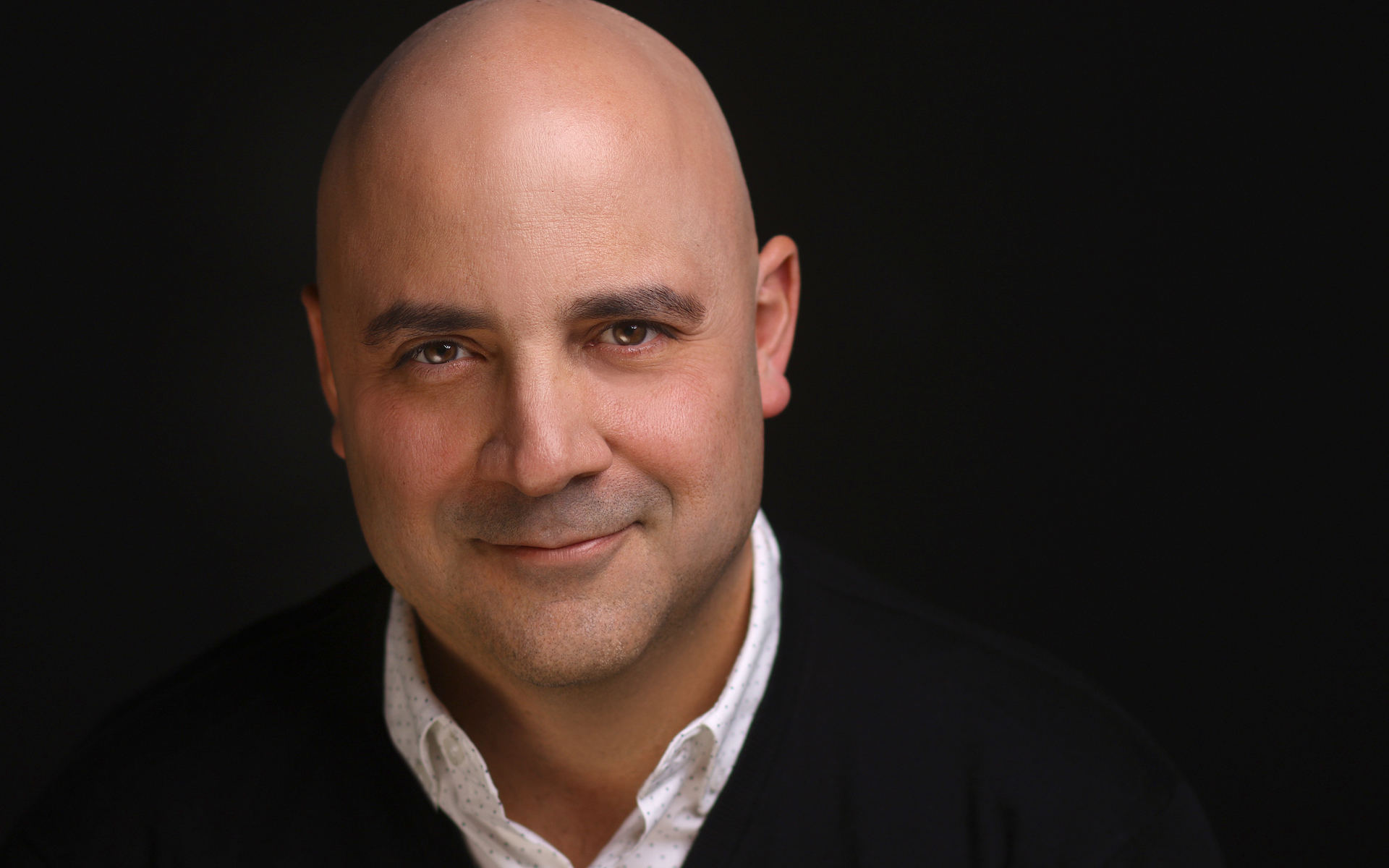Musicians have explored light and darkness since, well, probably the beginning of light and darkness. Or at least since the beginning of music. But composer, pianist, and Berklee Online instructor Vicente Avella is doing something different. His recent self-released third album, Physics of Light is 16 instrumental tracks on solo piano that all examine different facets of light, darkness, shadows, and how they play upon objects and what they mean in our lives. Songs like “Penumbra,” “Umbra,” and “Antumbra” accomplish with musical notes what Monet’s Rouen Cathedral series does with colors, looking at the same object in different lights. With a title like Physics of Light you might expect something complex and off-puttingly intellectual, but Avella’s playing is straightforward and heartfelt. His approach to scientific explorations feels full of childlike wonder and his melodic phrases ring so clearly that they feel lyrical. But the Physics of Light title is not to be taken lightly—no pun intended. To compose these songs, he says he dove headfirst into research to try to capture the sound of light.
Tell me about the actual physics of light and your study of it. You have said that the more you got into this, the more you “dove into the science, the physics.” So what exactly did diving into the physics mean for you, and how did that inform the composition?
Vicente Avella: My wife works in the medical field, so there’s always science in my house. And my eight-year-old is a little mini scientist; he’s really fascinated by it. Instead of reading him bedtime stories we’re reading books on what planets we have. And some of these things really triggered my own interest, and I guess light was one of them. … Light has always had so many connotations in human history or in culture, where people refer to light and dark as spiritual relationships. And also when it comes to visual artists, all those photographers and directors of photography out here in LA are always thinking about light—what lighting they’re going to use and what kind of shadows they’ll create. So the whole idea of light and shadows has always really been very interesting to me. So I started Googling and finding treatises that scientists had written on light and researching the subject and learning more. I mean, it was important for me to understand what I was writing about, to really understand what was the difference between penumbra, umbra, and antumbra. What really, is radiance? What do they talk about when they say “resistance”? What does that mean? If you asked me, “Okay, tell me what the formulas are, what the graphics are?” I couldn’t tell you that, but I understood it was important for me to know what I was writing about.
So how do you translate all of this research into music? Is it that you hear the notes of what it’s going to be while you’re reading, or do you do all of the research and then sit down at your piano and think about it while you figure out that translation? Or is it some other method entirely?
Vicente Avella: I would say that as I was doing the research, some of those words and some of those properties really triggered my imagination. And, maybe visually I could almost see the idea of radiance. I mean, the whole idea of something radiant and shining and bright, it immediately sparks a visual image that I tried to translate through harmony and rhythmic activity, or registers, colors, that kind of thing.
TAKE A COURSE WITH VICENTE AVELLA
I was watching what we might call the “sizzle reel” for Physics of Light, and my practical side couldn’t help wondering … was it a pain to transport that piano into that idyllic setting in nature?
Vicente Avella: I had one of my piano students at the time; I hired him as my assistant, so literally it was just the two of us. I rented a little dolly, which actually worked really well when the piano was on the street. But this place was like the poppy fields out in Lancaster [in northern Los Angeles County]. And it’s a lot of sand, so of course the wheels weren’t rolling really all that well, so yes, it was a lot of sweat. And then, of course I had to make myself switch gears real fast to go from moving to playing the piano, which wasn’t easy.
I understand that you also enlisted a former Berklee Online student to help with the album art in some capacity?
Vicente Avella: Yeah, actually, Satomi Ohnishi was one of my students in the Music Composition for Film and TV course. And I knew her obviously as a composer. She’s in Australia and she’s also a drummer and that’s all I knew about her, actually. I knew her from that end of things, but we’ve stayed in touch since then. And at some point I put a post on social media saying, “Hey, does anybody know any scientists? I’m trying to find somebody.” Because I was pulling all this stuff off of the internet, I mean, you know you can’t believe everything on the internet, right?
You can’t believe everything on the internet? Wait, what?
Vicente Avella: [Laughs] There’s always Dr. Google, right? My wife keeps talking about Dr. Google. All these patients that come in that know a lot, right? They think because they’ve done some internet research they know more than the doctor that went to college. But I wanted the cover art to be accurate. It really would stress me out to think that I had some formula out there and the numbers were wrong or the art wasn’t quite right. So, I wanted somebody to prove that those charts and the formulas on the album art were right. She made a few corrections or adjustments and gave me a couple that I didn’t have, or she’s like, “Oh, you know you have this as a formula, but there’s this really cool graphic that might be something that you might want to use.” So she was really great that way. And I didn’t know she was a former physicist. Now she’s a full-time musician, but of course I didn’t know that.

Do you stay in touch with a lot of your students?
Vicente Avella: I do, actually. I make a point to offer them my contact information, at least to social media and stuff like that. Of course, they can always get in touch with me through my Berklee email. But yeah, and I just give them the choice, “Hey, if you want to stay in touch, go for it.” And, many of them do, they add me as their friend or whatever, and it’s kind of nice.
I like how Physics of Light contains a pretty even distribution of major key pieces and minor key pieces, and how that could relate to light and darkness. Was that a conscious choice?
Vicente Avella: Yes, I wanted it to be a combination. I wanted it to be balanced. I didn’t want it to be all minor or all major.
To my not entirely trained ear, I couldn’t tell for sure, but are there other modes going on in any of the other songs?
Vicente Avella: There is one that’s Lydian mode, actually, called “Ultraviolet.” It meanders between A♭ Lydian and D♭ Lydian. So, I feel like personally I would analyze it more as D♭ Lydian.
What I think is most exciting about this album is that it feels like deliberate simplicity, and that the simple sound is almost deceptive. Correct me if I’m wrong, but these songs seem like you wrote them to sound like they’re easy, but there’s probably a lot more going on than the casual listener might think.
Vicente Avella: Thank you. Actually, you really touched on something that I think is important to me. I do make a point of trying to convey that. To me the idea of creating something that is simple, but at the same time, people who maybe know more can get more. There’s a quote, which I don’t honestly even know if it’s true or if it was something that somebody just attributed to Amadeus. But it always struck me how Mozart said that he wrote music that he wanted to appeal to the general public, but also be interesting to the people who knew more. Also, since we’re talking about science, I remember when I was in college, doing my undergrad—I did an undergrad in music, but I did have to take some science courses because I did go to a university and had to take some electives. And one of those classes that I took was an astronomy class, which I found very interesting. And, there was something that the teacher said at one point that really caught my attention. And it was the difference between a theory and a law, in science. And she said, “Well, if you get a theory, it’s pages and pages and pages, and a lot of ‘this could happen,’ and ‘the studies have done this,’ that kind of stuff. But once you’ve figured out exactly how it works, it’s a law. And then it comes down to a formula, it comes down to just a little graphic.” I mean, it was very simple. And I’m like, “It’s just beautiful. I like the idea of this simplicity.”
But it’s almost like when you have access to so many tools, it must be tempting to make something complex. It’s like you have to dare to be straightforward.
Vicente Avella: And it can be challenging! It’s something that I tell my students in the Music Composition for Film and TV course, when we’re doing some genres like, love and positive emotions, or sadness and sorrow, which tend to be lower rhythmic activities, slower, calmer. And, I tell them, “Look, don’t be tempted to fill that whole page. There will be a time for that: there’s some action music coming up and that will be a full page, but there are other times where you want it to be whole notes and a lot of little white, half notes, not a lot of instruments playing and that’s okay.”






